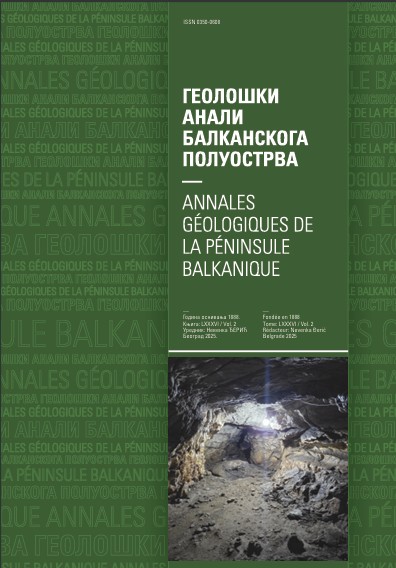Quaternary tectonic and depositional evolution of eastern Srem (northwest Serbia)
Abstract
The area of eastern Srem is situated in the southern periphery of the Pannonian basin. Its depositional evolution during the Neogene and the Quaternary has been controlled by tectonic processes. Miocene extensional subsidence was followed by the Pliocene-Quaternary inversion of the basin. The latter was accomplished as the result of replacement of the tensile by the compressive stress field. Since the Late Neogene, the regional tectonic activity has been controlled by compressive stress produced by the northnortheastern propagation of the Adria microplate. In the compressive NE-SW-oriented stress field, the recent structural plan of the Pannonian basin and its wider environment, including its southern periphery, was reactivated. The youngest tectonic deformations are characterized by positive and negative vertical motions of large intrabasinal segments and basinal periphery, resulting in the final inversion of the basin. The effects of the basinal inversion can be recognized in genetic features of Quaternary sediments and geomorphological characteristics of the relief. Sources of data used for the interpretation of the Quaternary tectonic activity in the area of eastern Srem are of geological, geomorphological, thermochronological, and geophysical character. The positions of prominent fault structures have been ascertained by remote sensing, interpretations of available geophysical cross-sections, and using the field data.
Copyright (c) 2022 Geološki anali Balkanskoga poluostrva

This work is licensed under a Creative Commons Attribution 4.0 International License.










